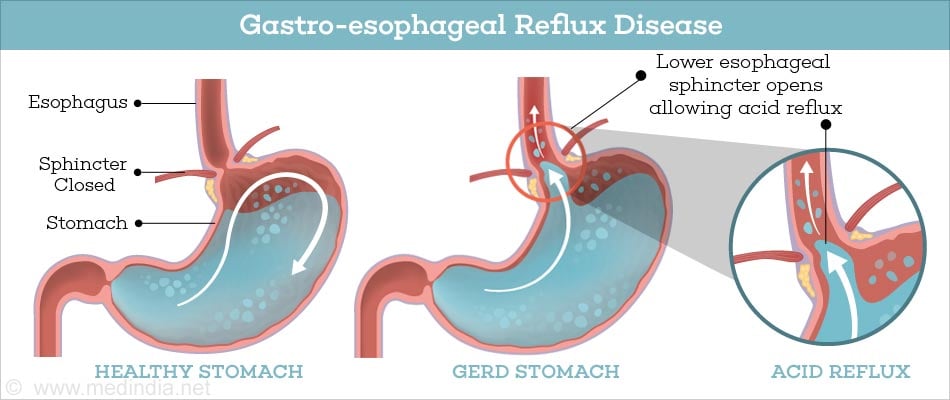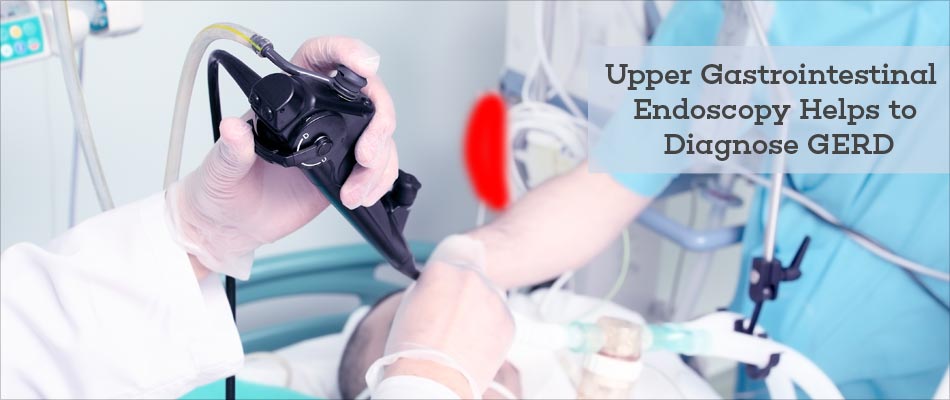What is Nissen fundoplication?
Nissen fundoplication is a surgery used to treat gastroesophageal reflux disease wherein the stomach fundus is sewn in position all around the lower esophagus.
Nissen fundoplication is a surgery used to treat gastroesophageal reflux disease wherein the stomach fundus is sewn in position all around the lower esophagus.
Gastro-esophageal reflux disease (GERD) is a digestive tract disorder where acid from the stomach efluxes and affects the lower part of the esophagus or the food pipe due to an incompetent lower esophageal sphincter (LES).
Food, upon swallowing, goes through the food pipe called the esophagus into the stomach. The esophagus passes through an opening in the diaphragm called the hiatus into the abdomen to join the stomach. The diaphragm is the muscular partition between the chest and the abdomen.
The lower end of the esophagus is guarded by a muscular sphincter at its junction with the stomach, called the lower esophageal sphincter (LES). Normally, the sphincter prevents the reflux of acid from the stomach into the lower esophagus. An incompetent sphincter allows the reflux, resulting in GERD.
GERD results in symptoms of heartburn and a sour taste in the mouth, and can cause complications like Barrett’s esophagus and even esophageal cancer in the long run. The chest pain of GERD is often mistaken for a heart attack. It also causes respiratory symptoms like laryngitis, chronic cough, asthma, and ear infection.
Some patients with GERD also have hiatal hernia. Hiatal hernia is a condition where the upper part of the stomach called the fundus slides through the hiatus in the diaphragm into the thoracic region.
Nissen fundoplication can be done in the following patients with GERD:
Nissen fundoplication is of two types:
Laparoscopic Nissen fundoplication is preferred due to lesser pain, an early recovery with a shorter hospital stay, a better cosmetic result and lesser complications like surgical trauma. The open surgery is done when the laparoscopic surgery cannot be done or is not available.
Your doctor will first take a detailed medical history followed by a physical examination and ask you to undergo tests to confirm the presence of GERD that requires surgery. Tests used to diagnose the GERD include upper gastrointestinal endoscopy, esophageal manometry, and 24-hour pH studies:
Upper gastrointestinal endoscopy: Upper gastrointestinal endoscopy is a procedure where a tube with a light source and a camera at the lower end is introduced through the mouth into the stomach and the first part of the duodenum. It provides a clear view of the lower end of the esophagus. The procedure is done after overnight fasting. An anesthetic is sprayed on the throat to prevent gag reflex during the procedure. Inflammation of the lower end of the esophagus is noted in patients with GERD. A biopsy may be obtained and sent for pathological examination.
Esophageal manometry: Esophageal manometry measures the pressure of the LES. The patient is asked to fast and refrain from smoking for around 6 hours before the procedure. A local anesthetic is applied to the nostril, and a catheter with a sleeve is passed down to the LES. The normal pressure of the LES is between 12 and 30 mm of Hg, which is reduced to less than 6 mm of Hg in patients with LES dysfunction.
24-hour pH test: The 24-hour pH test is of two types, one done with a catheter, and the second with a wireless pH capsule. During the catheter test, a catheter with a pH sensor is introduced through the nostril into the esophagus, and is connected to a recorder that you can wear on your belt or over your shoulder. You will have to record your eating times and activities, and the pH using the recorder for a day. A pH of less than 4 indicates acid reflux.
The wireless pH capsule is introduced into and attached to the wall of the esophagus through an endoscopy procedure, and is connected wirelessly to a recorder that you can attach to your belt. The capsule need not be removed after the test – it will pass through the digestive tract within 7 to 10 days.
Barium esophagogram: The barium esophagogram is used mainly in people with swallowing difficulties. The patient swallows radiopaque barium, and its passage through the esophagus is studied through fluoroscopy and x-rays
Routine tests which are done before any surgery will also be advised. These include:
Pre-operative Check-up – During the pre-operative check-up, routine tests as indicated above are ordered a few days before the surgery. Medications like aspirin or other blood thinners should be stopped about a week prior to the procedure. Admission is required a day before the surgery.
The Day before the Surgery –
Shift from the Ward or Room to the Waiting area in the Operating room - An hour or two before the surgery, you will be shifted to the operating room waiting area on a trolley. Once the surgical room is ready, you will be shifted to the operating room.
Shift to the Operating room - The ambience in the operating room can sometimes be very scary and a small amount of sedation can help in overcoming your anxiety. From the trolley, you will be shifted onto the operating table. As you look up, you will see the operating light console and at the head end will be the anesthesia machine. There may also be monitors to check oxygen levels, ECG and other vital parameters. A constant beeping sound may be present from the monitors, which may sometimes be irritating; these are monitoring your heart beat and other vital parameters.
Anesthesia before Surgery – The surgery is done under general anesthesia; you will be asleep during the procedure and will not be aware of what is going on. The anesthetist will inject drugs through an intravenous line and make you inhale some gases through a mask that will put you in deep sleep. Once you are asleep, a tube will be inserted into your mouth and windpipe to administer the anesthetic gases to overcome pain and keep you comfortable while the surgery is going on.
During the Procedure:
During open Nissen fundoplication, the skin incision is made in the upper abdomen, though it may also be done through a chest or a chest-plus-abdominal incision.
During the intraabdominal approach, the liver is lifted to expose the lower end of the esophagus, which is mobilized along with the upper end of the stomach.
The upper end of the stomach is encircled around the lower end of the esophagus, and kept in place with the help of sutures. The hiatus may be repaired using sutures.
Nissen fundoplication can also be done with the help of a laparoscope in which multiple small incisions are made in the abdomen through which instruments are introduced and the surgery is conducted.
After the Nissen fundoplication:
Waking up from General Anesthesia – If you have received general anesthesia, once the surgery is over, you will wake up and the tube down the wind pipe will be removed. You will be asked to open your eyes before the tube is removed. You will still be sedated a bit and the voice of the anesthetist may be faint. Once the tube is out, you may have cough and sometimes nausea.
There will be a nasogastric tube and also an intravenous line. You will remain on oxygen support. Once fully awake, you will be shifted on the trolley and taken to the recovery room.
Recovery room – In the recovery room, a nurse will monitor your vitals and observe you for an hour or two before shifting you to the room or a ward.
Post-operative recovery – The nasogastric tube will be removed on the next day and you will be allowed sips, and later soft foods. You may feel some discomfort while swallowing initially, which will soon settle down. Pain relievers and antibiotics may be prescribed.
Chest physiotherapy may be started after 24 hours to prevent chest infection.
DVT Prophylaxis – Early movement of your legs and some mobilization prevents DVT or deep vein thrombosis, where a clot is formed in the deep veins of the legs. The clot can travel up to the lungs and even be fatal. Other measures like a small dose of heparin and special stockings may also be used to prevent DVT.
Discharge from hospital – Once your parameters are all normal and the tubes have been removed, you will be discharged from the hospital. You will be advised to avoid lifting up heavy weights following the surgery. Most patients do not require anti-reflux medications following the procedure.
Nissen fundoplication is a safe procedure, although there may be certain complications related to the surgery:
Health tips for GERD include:




